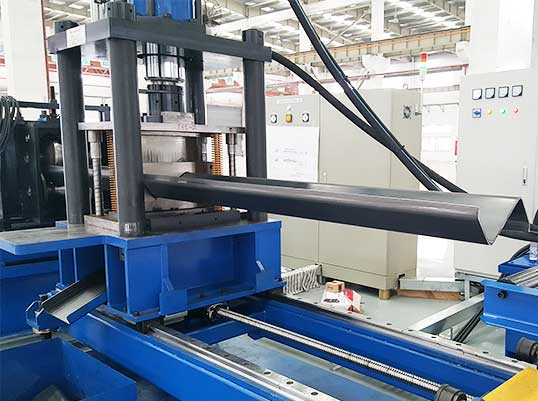Navigation Menu
Contact Us
- Email:
- info@wxavatar.com
- Address:
- Yurong Village, Yuqi Street, Huishan District, Wuxi, China.
Release Date:Jul 01, 2025 Visit:42 Source:Roll Forming Machine Factory
In modern manufacturing, solar stand roll forming machines have become essential equipment for producing mounting structures in the solar energy sector. These specialized machines offer distinct advantages that enhance production workflows and output quality. This article examines the operational benefits of solar stand roll forming technology and its impact on manufacturing productivity.

Precision Engineering for Consistent Output
Solar stand roll forming machines utilize computer-controlled systems to maintain exact dimensional tolerances throughout production runs. The automated process minimizes human error in measurement and cutting, ensuring each component meets specified design requirements. This consistency reduces material waste from incorrect cuts or improperly formed sections.
High-Speed Continuous Operation
Unlike traditional fabrication methods that require multiple steps, roll forming machines complete the entire shaping process in a single pass. The continuous operation allows for uninterrupted production, significantly increasing output rates compared to manual or semi-automated alternatives. Production speeds can be adjusted according to material thickness and complexity of the profile being formed.
Reduced Labor Requirements
Automated roll forming systems consolidate what would traditionally require several separate operations into one streamlined process. This integration decreases the need for manual intervention, allowing staff to focus on quality control and machine oversight rather than repetitive tasks. The reduction in direct labor per unit lowers overall production costs.
Material Optimization Features
Modern roll forming machines incorporate advanced software that calculates the most efficient material usage patterns. This capability minimizes scrap during the forming process by optimizing how raw materials are fed and shaped. Some systems can even nest different components to maximize yield from each coil or sheet of material.
Flexible Production Capabilities
With quick-change tooling systems, solar stand roll forming machines can switch between different product configurations with minimal downtime. This flexibility allows manufacturers to respond promptly to design changes or produce multiple product variants on the same equipment. Digital controls store preset parameters for different profiles, ensuring consistent quality across production runs.
Integrated Quality Control Systems
Many contemporary roll forming machines include in-line inspection systems that monitor product dimensions and surface quality during operation. These systems can automatically adjust machine parameters to correct deviations, maintaining quality standards without stopping production. The immediate feedback loop prevents large batches of non-conforming product.

Conclusion
Solar stand roll forming machines enhance production efficiency through precision automation, continuous operation, and integrated quality control. These systems enable manufacturers to meet demanding production schedules while maintaining consistent product quality. As technology advances, further improvements in speed, flexibility, and material efficiency continue to strengthen the business case for adopting roll forming solutions in solar component manufacturing.